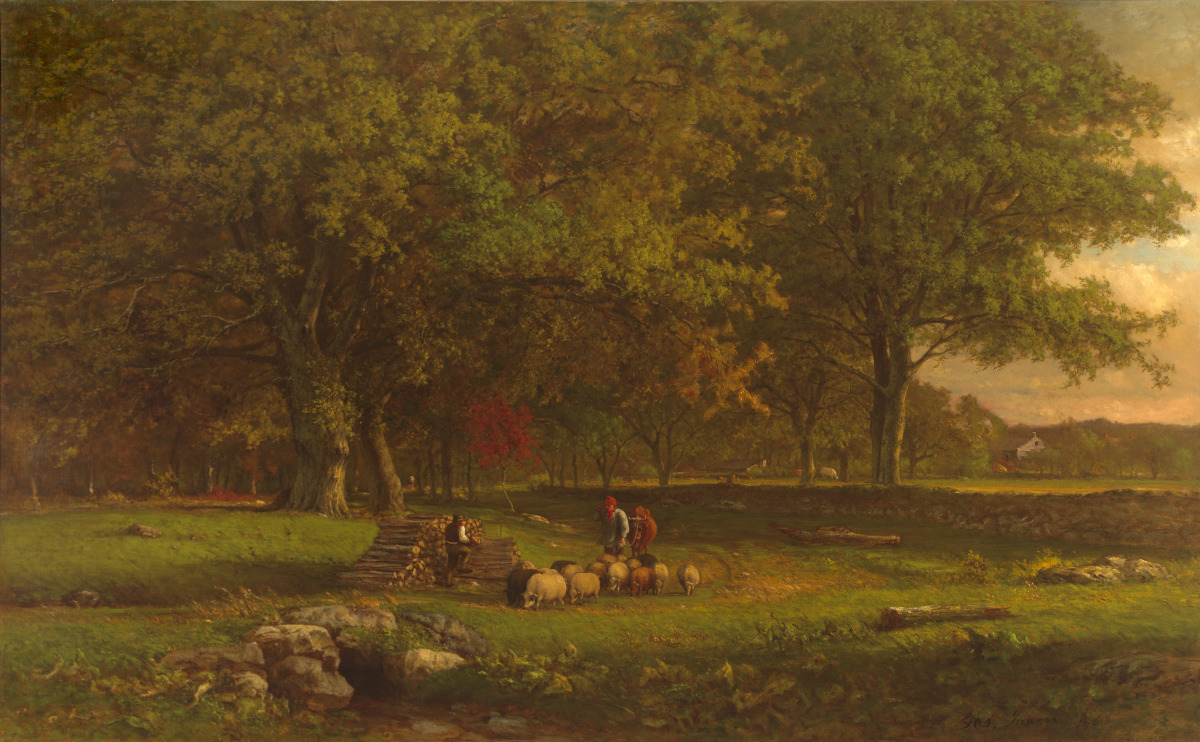
Evening (Primary Title)
George Inness, American, 1825 - 1894 (Artist)
A leading figure of the Hudson River school, George Inness is best known for serene landscapes that resonate with the ideal of America as the New Eden. Evening captures two men, one piling wood and another driving his livestock home, after a long day’s work. The harmonious copper tones of sunset lend the activities a certain quietude, recalling the effects of French Barbizon painters. The painting likely invokes the artist’s spiritual beliefs. In 1863, at the height of the American Civil War, Inness moved his studio from a farm in Massachusetts to a religious utopian community in New Jersey. The group’s Swedenborgian conviction that the divine presence resided in all material things became a guiding inspiration for the remainder of his career.
At lower right: George Inness 1863
James W. and Frances Gibson McGlothlin Collection
Quick 333; Ireland 431.
"American Art from the McGlothlin Collection" Virginia Museum of Fine Arts (1 May - 18 July 2010).
Executive Mansion, Albany, New York (1983-1992).
Memorial Society of Liberal Arts, Omaha, NE (n.d.).
Terra Haute, Indiana (September-November, 1948).
"Centennial Art Gallery," Utah State Fairgrounds, Salt Lake City, UT (1947).
Akron Art Institute, Akron, OH (1930).
"Collection of Paintings and Sculpture in the West Galleries and teh Grand Hall," Metropolitan Museum of Art, New York (November, 1887-November, 1888).
"Loan Collection of Paintings and Sculpture," Metropolitan Museum of Art, New York (May-October, 1887).
Executive Mansion, Albany, New York (1983-1992).
Memorial Society of Liberal Arts, Omaha, NE (n.d.).
Terra Haute, Indiana (September-November, 1948).
"Centennial Art Gallery," Utah State Fairgrounds, Salt Lake City, UT (1947).
Akron Art Institute, Akron, OH (1930).
"Collection of Paintings and Sculpture in the West Galleries and teh Grand Hall," Metropolitan Museum of Art, New York (November, 1887-November, 1888).
"Loan Collection of Paintings and Sculpture," Metropolitan Museum of Art, New York (May-October, 1887).
Some object records are not complete and do not reflect VMFA's full and current knowledge. VMFA makes routine updates as records are reviewed and enhanced.

